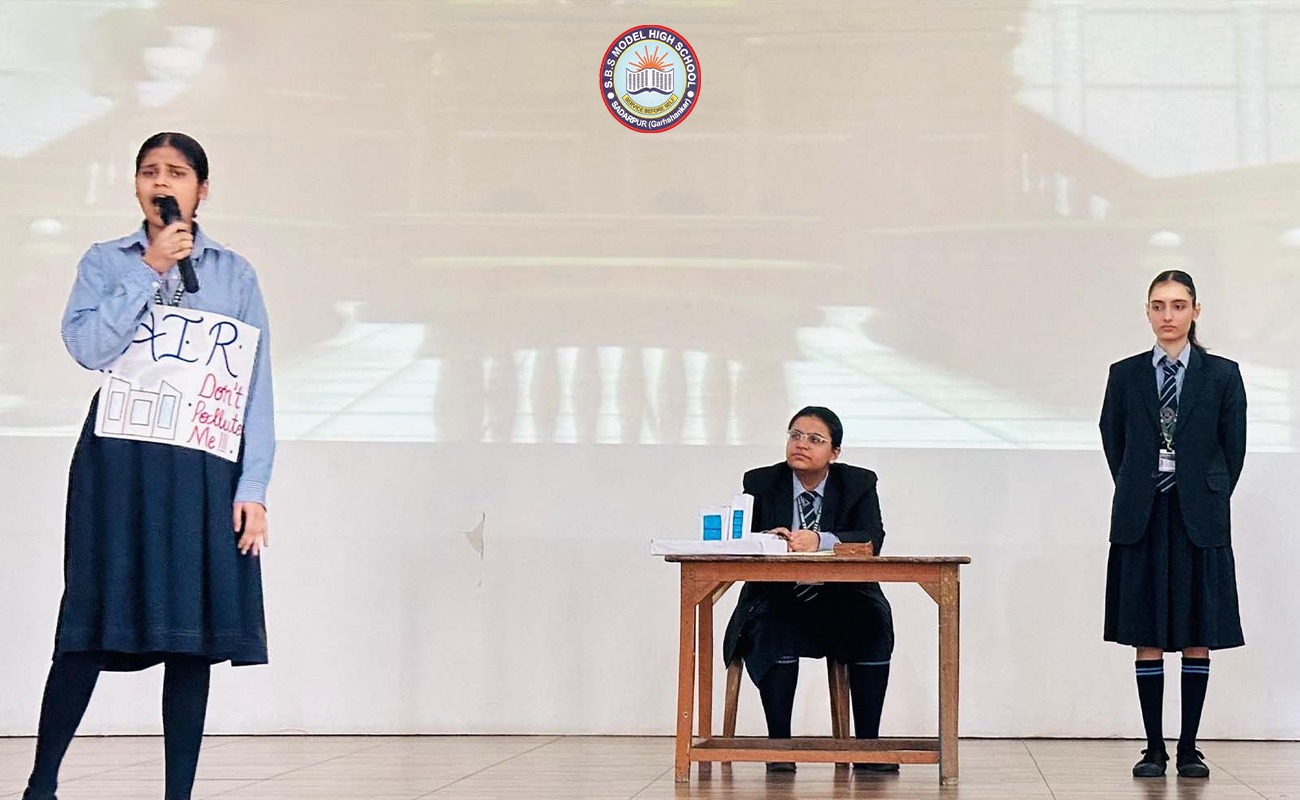
Public speaking is a vital life skill that transcends classrooms and boardrooms. At SBS Model High School, the Best CBSE Schools in Hoshiarpur, we believe that confidence in speaking is not an innate trait but a cultivated ability that empowers students to express themselves clearly, persuasively, and with poise. This blog delves into the essential components that contribute to becoming a confident speaker, drawing from expert insights and practical strategies.
1. Preparation: The Foundation of Confidence
Confidence stems from thorough preparation. Understanding your topic inside out allows you to speak with authority and clarity. As experts suggest, “Confident speakers know what they want to say”. This preparation involves not only researching the subject matter but also organizing thoughts coherently and anticipating potential questions or challenges.
At SBS Model High School, we encourage students to engage in comprehensive research, outline their speeches, and rehearse multiple times. This approach ensures familiarity with the content and reduces anxiety during actual presentations.
2. Authenticity: Being True to Yourself
Authenticity resonates with audiences. Confident speakers are those who are genuine to themselves. They share personal anecdotes, express their beliefs, and connect with listeners on a human level. As highlighted by communication experts, “Confident speakers are authentic.”
In our school, we promote an environment where students feel safe to express their thoughts and experiences. This authenticity not only enhances their confidence but also fosters a deeper connection with their audience.
3. Practice: Repetition Leads to Mastery
Repetition is key to mastering public speaking. Practicing speeches aloud, recording oneself, and seeking constructive feedback are effective methods to improve delivery. As noted, “Confident speakers rehearse their presentations—out loud”
Our students are encouraged to participate in mock presentations, peer reviews, and self-assessment exercises. These practices help them refine their speaking skills and build self-assurance.
4. Body Language: Non-Verbal Communication
Non-verbal cues significantly impact how a message is received. Confident speakers maintain good posture, make eye contact, and use purposeful gestures to emphasize points. As experts advise, “Develop a confident body language.”
At SBS Model High School, we incorporate body language training into our curriculum. Students learn to project confidence through their physical presence, enhancing the effectiveness of their communication.
5. Breathing Techniques: Managing Anxiety
Anxiety can hinder effective speaking. Learning to control breathing helps manage nervousness and maintain composure. Techniques such as deep breathing exercises can calm the mind and body, allowing for clearer speech
We teach our students various relaxation techniques, including diaphragmatic breathing, to help them stay calm and focused during presentations.
6. Feedback: Constructive Criticism for Growth
Receiving and acting upon feedback is crucial for improvement. Constructive criticism helps speakers identify areas for enhancement and build resilience. As emphasized, “Get feedback”
Our school fosters a culture of constructive feedback, where students and teachers engage in open dialogues to promote continuous learning and growth.
7. Focus on the Message, Not the Self
Shifting focus from self-consciousness to the message being delivered can alleviate performance anxiety. Confident speakers concentrate on conveying their ideas effectively rather than worrying about being judged
We guide our students to concentrate on the value of their message, encouraging them to see public speaking as an opportunity to share knowledge and insights.
8. Engagement with the Audience
Engaging the audience creates a dynamic interaction that boosts a speaker’s confidence. Asking questions, encouraging participation, and responding to audience cues make the experience more interactive and less intimidating
In our programs, students are trained to read the room, adjust their delivery based on audience reactions, and foster an inclusive atmosphere during their presentations.
9. Utilizing Technology and Tools
Incorporating visual aids and technology can enhance presentations and support speakers in delivering their message effectively. Tools like PowerPoint, videos, and interactive elements can make presentations more engaging and less reliant on verbal delivery alone. We provide our students with access to various technological resources, teaching them how to use these tools to complement their speaking skills.
10. Continuous Learning and Adaptation
Confidence in speaking is an evolving skill. Continuous learning, exposure to diverse speaking opportunities, and adaptability to different audiences and settings contribute to long-term growth as a speaker
At SBS Model High School, we offer a range of platforms for students to practice public speaking, including debates, seminars, and inter-school competitions. These experiences help them adapt to various speaking scenarios and build enduring confidence.
Conclusion
Becoming a confident speaker is a journey that involves preparation, authenticity, practice, and continuous learning. At SBS Model High School, the Best CBSE School in Garhshankar, we are committed to nurturing these qualities in our students, empowering them to communicate effectively and confidently in all aspects of life.
